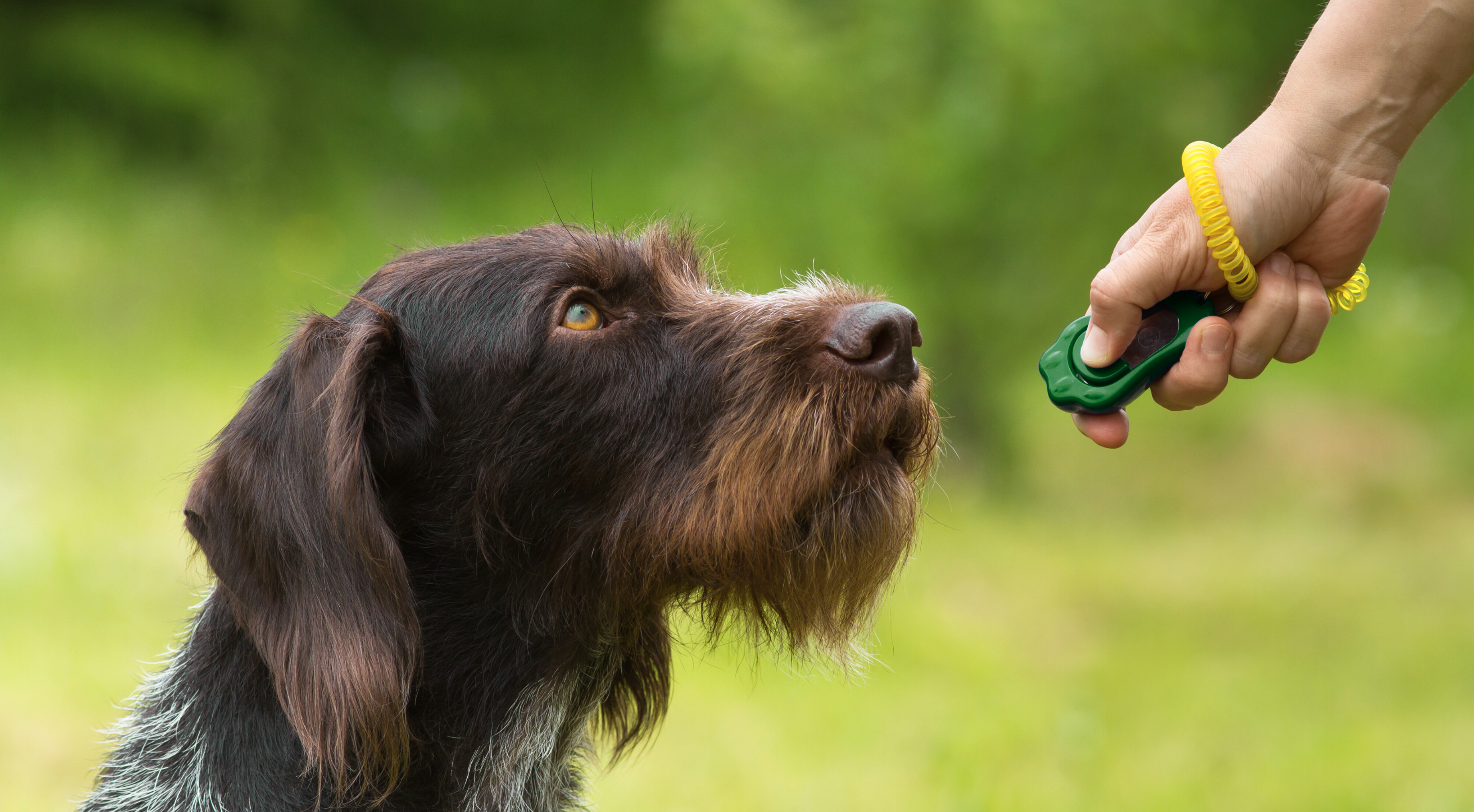How To Clicker Train Your Dog: A Friendly Guide To Positive Reinforcement
Clicker training has become a popular and effective method for teaching dogs new commands and curbing unwanted behaviours. By using a hand-held device that emits a distinct sound, this technique is grounded in the principles of operant conditioning and positive reinforcement. The sharp click pinpoints the exact moment your dog performs the desired action, followed by a reward, creating a clear association between the behaviour and the positive outcome. This method fosters communication between you and your dog, promoting an environment of learning and mutual respect.
What Is A Clicker?
A clicker is a small handheld device that produces a distinct click sound when pressed. This sound marks the exact moment your dog performs the desired behaviour. Typically, the clicker is a plastic box with a metal tongue inside that makes the sound when depressed. It's a consistent and clear way to communicate with your dog, crucial for effective training.
Why Clickers Work?
Clickers operate on the principles of operant conditioning. The distinct click sound becomes an efficient marker that signals to your dog that they've done something right, immediately followed by a reward, usually a treat. This consistent pairing creates a positive association in the dog's mind. Clickers are preferred over verbal cues like "good" because they provide a unique and unvarying signal, making them a powerful tool in training.

Before Starting The Training
Embarking on the journey of clicker training requires a few supplies and an understanding of the process to effectively teach new skills and modify behaviour.
- Clicker: A small hand-held device that makes a consistent sound when pressed. It acts as a marker to tell your dog the exact moment they've done something correctly.
- Treats: Small, tasty rewards are crucial for positive reinforcement. Choose treats that are irresistible to your dog but still healthy.
- Training Pouch: Keep your treats readily accessible with a pouch or bag that you can easily reach into.
- Leash: A short, sturdy leash is useful for guiding and controlling your dog during training sessions.
Getting Started!
Begin in a quiet environment with minimal distractions to help your dog focus. Introduce the clicker by clicking and immediately giving a treat. Repeat this several times until your dog anticipates the treat after hearing the click. This process, often referred to as "charging the clicker," helps your dog associate the click sound with a positive outcome.
Learning The New Skill
Once your dog understands that a click means a reward is coming, you can start teaching new behaviours.
- Cue and Action: Clearly and confidently give a verbal cue or signal only once and wait for your dog to perform the action. As soon as your dog performs the correct behaviour, click and reward.
- Short Sessions: Keep training sessions brief, around 5 to 10 minutes, to maintain your dog's interest and prevent frustration.
Changing Behaviour: Positive Reinforcement
Clicker training can effectively address various behavioural challenges by reinforcing desired behaviours.
- Consistency: Always click at the same point in the desired behaviour and follow with a treat.
- Timing: Your click must occur as the desired behaviour happens, not before or after, to ensure clear communication.
Does Your Dog Bark Too Much?
Excessive barking can be a sign of anxiety, boredom, or a lack of stimulation. Clicker training can help by teaching your dog an alternative way to communicate their needs.
- Identify the Trigger: Determine what's causing your dog to bark excessively.
- Redirect the Behaviour: As soon as your dog starts to bark, redirect their attention to a more positive action that you can reward.
- Mark and Reward: Use the clicker the moment your dog ceases barking to pursue the alternative action, then reward them immediately.
Consistency is key. By reinforcing silence with treats after a click, your dog will learn that not barking in certain situations is more rewarding.

Does Your Dog Jump on Visitors?
Jumping on visitors is often a friendly gesture from your dog, but it can be unwelcome and potentially dangerous. Clicker training can help to keep all four paws on the ground.
- Teach a New Greeting: Encourage your dog to sit or perform another calm behaviour when someone enters the home.
- Click for Calm: Use the clicker as soon as your dog stays calm or sits down as a visitor arrives, followed by a treat.
Practice with different visitors to make this a reliable response. Over time, your dog will understand that staying down leads to positive outcomes like treats or affection.
Marley's Must Know: Choose treats that your dog finds irresistible to maintain motivation during training sessions. Keep Sessions Short! Limit training sessions to 5–10 minutes and end on a positive note to keep your dog engaged and eager to learn.
 The Final Woof
The Final Woof
Clicker training is a powerful tool that enhances communication between you and your dog. By marking desired behaviours with a distinct sound and following up with a reward, you create a clear and consistent training environment. This method not only teaches new commands but also strengthens the bond between you and your furry friend. Remember, patience and consistency are key. Happy training!













